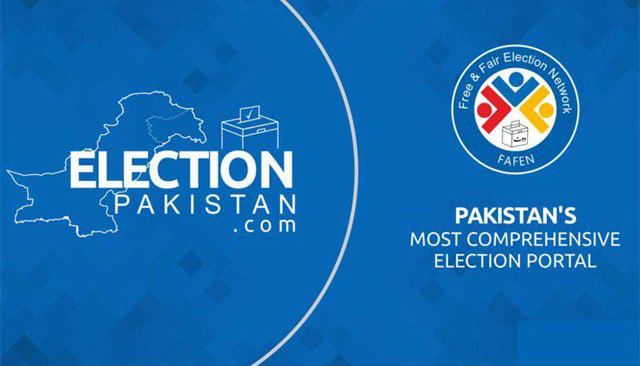This Wednesday, the Free and Fair Election Network (FAFEN) along with the Trust for Democratic Education and Accountability (TDEA) – a spin-off of FAFEN by the same team – introduced an election information portal, ‘Election Pakistan’ claiming it to be the most comprehension source of election-related data.
Muddassir Rizvi, FAFEN Senior Director Programmes reportedly told, “This portal will enable citizens to access information that is difficult to get. Information certainty is the first step towards rational and informed choices.”
Addressing the launching ceremony, FAFEN CEO Shahid Fiaz emphasized on the need to use technology in fostering democracy in the country. General Secretary FAFEN Sarwar Bari also highlighted the initiative in bringing transparency in the democratic process.
Coming to the features, the portal allows users to draw self-analysis of the election data, cross-examine candidates’ data with constituencies, statistics as well as election-related reports and publications.
Not only that, it also provides the detailed history of political parties, informing plenty of stuff like their alliances, electoral boycotts and which seat in the party is most crucial and which one is most safe.
Moreover, the users can access the complete data of national and provincial assemblies including by-elections too and list of every contestant, from 1970 to this date.
Speaking of assemblies, the portal holds the records of more than 7,300 unique constituencies of national and provincial assemblies. Even more, there is complete information and historical timeline of each of the constituency’s record available for the users to search.
As far as the future records are concerned, the portal is designed to keep the records of all coming elections in the country.
‘Election Pakistan’ contains the records of more than 62,506 candidates. With the portal’s scalability to synchronize candidates’ election records, one can reflect upon the election records of contesting candidates as well.
Furthermore, it highlights the thorough analysis based on the geographical clustering of constituencies, including the changes in the vote-shift, top three political parties, registered voters and the turnout.
You can check out the portal from the official website, from here.
Share your thoughts down in the comments section.
For more on the technology, keep following TechJuice.












